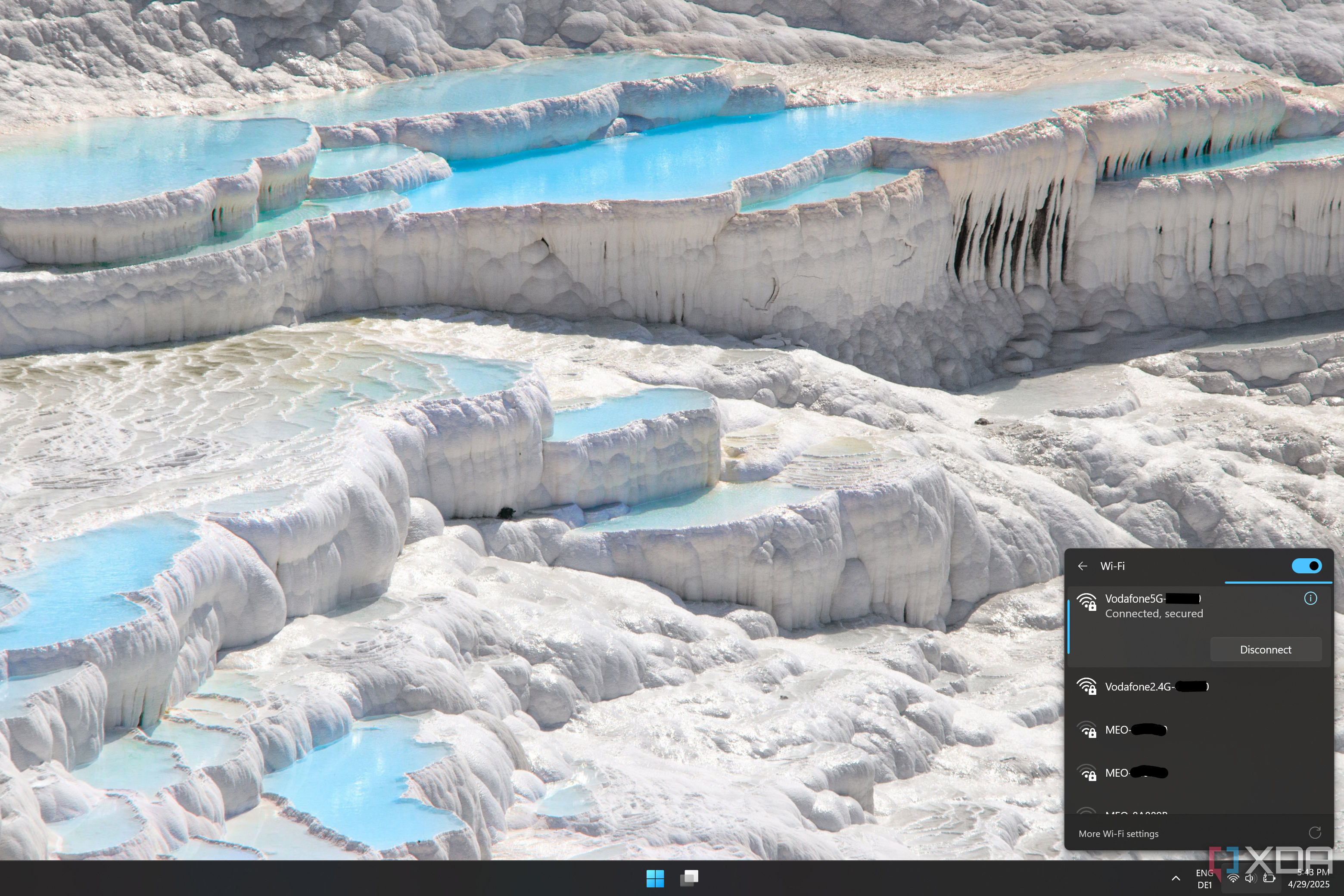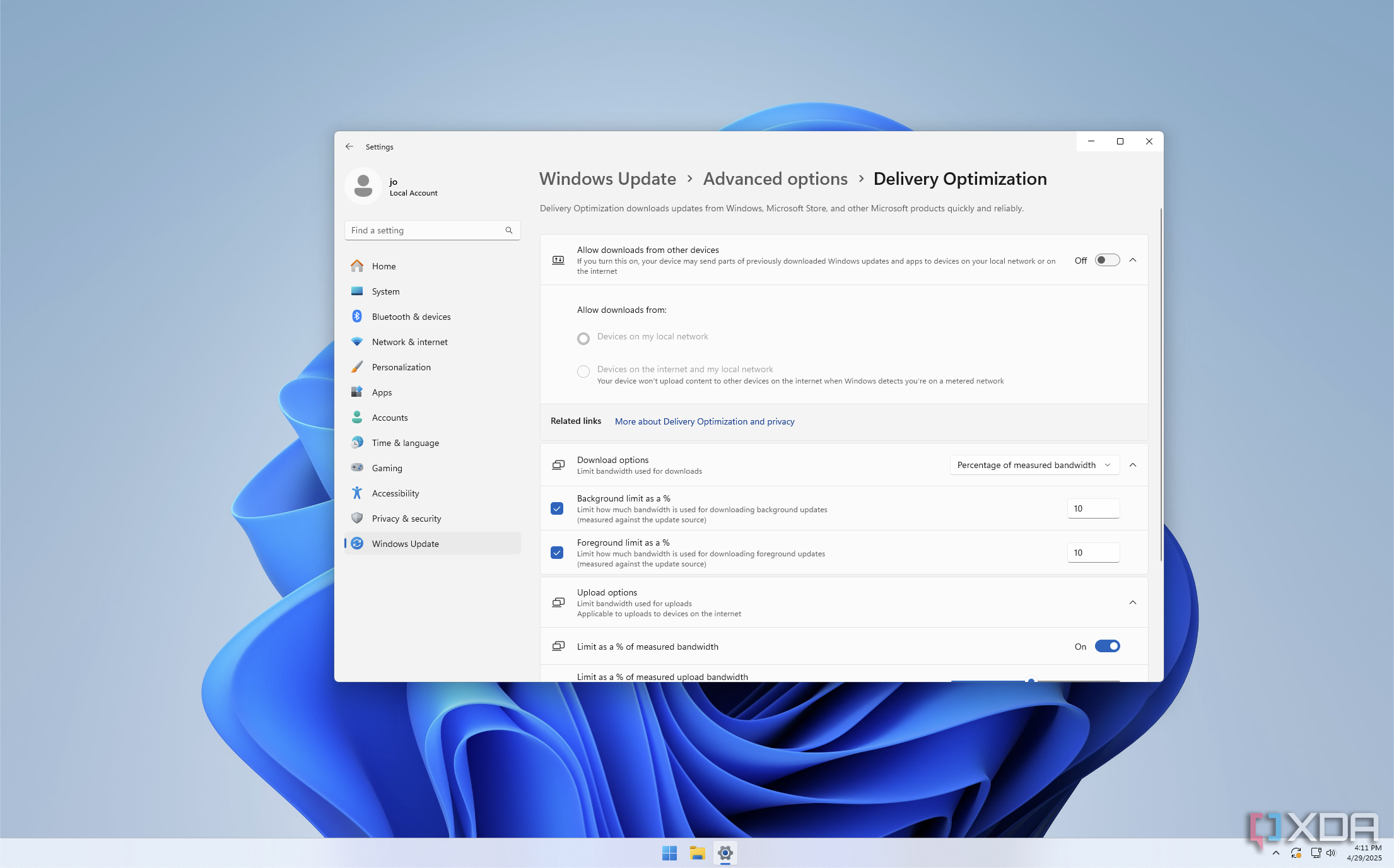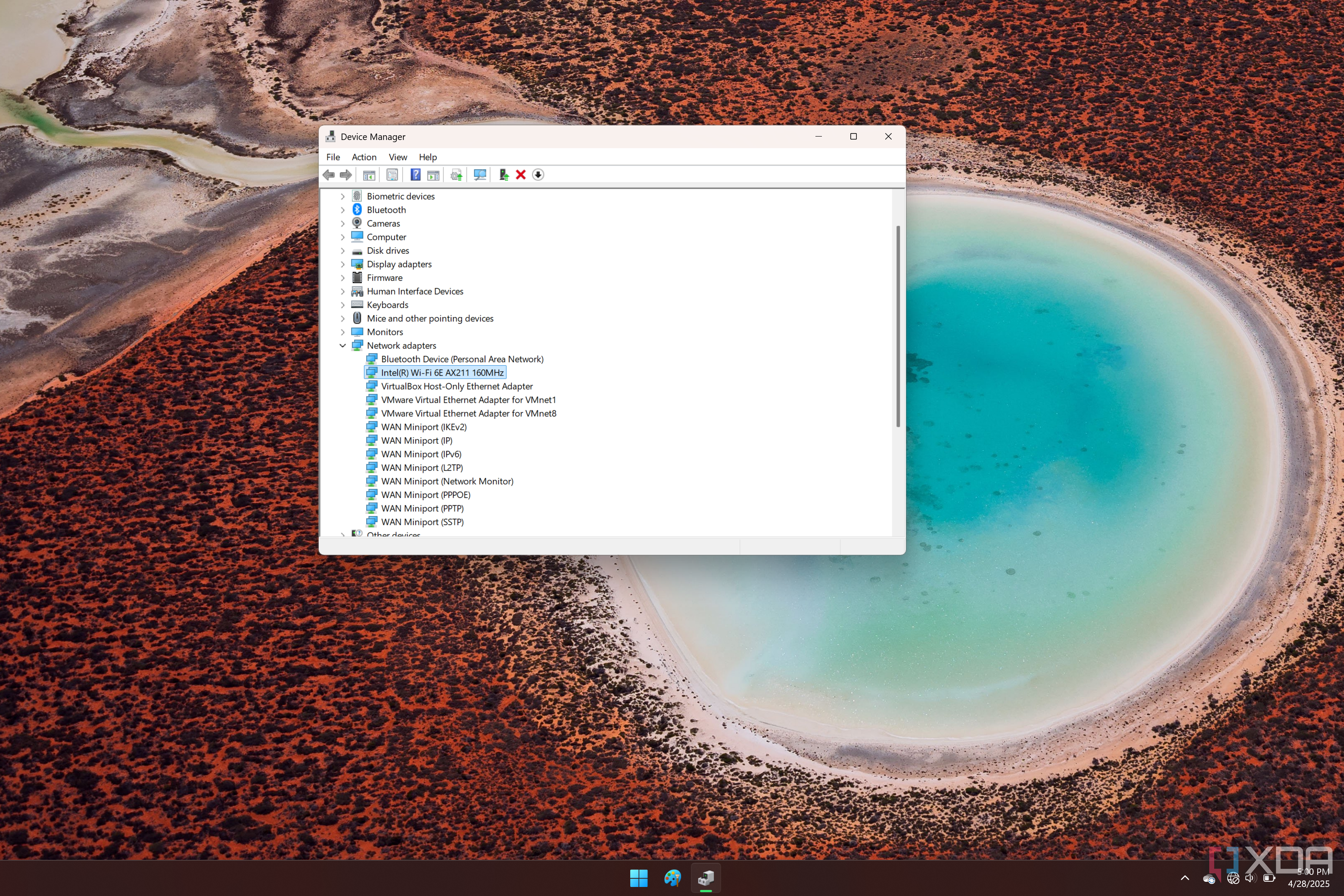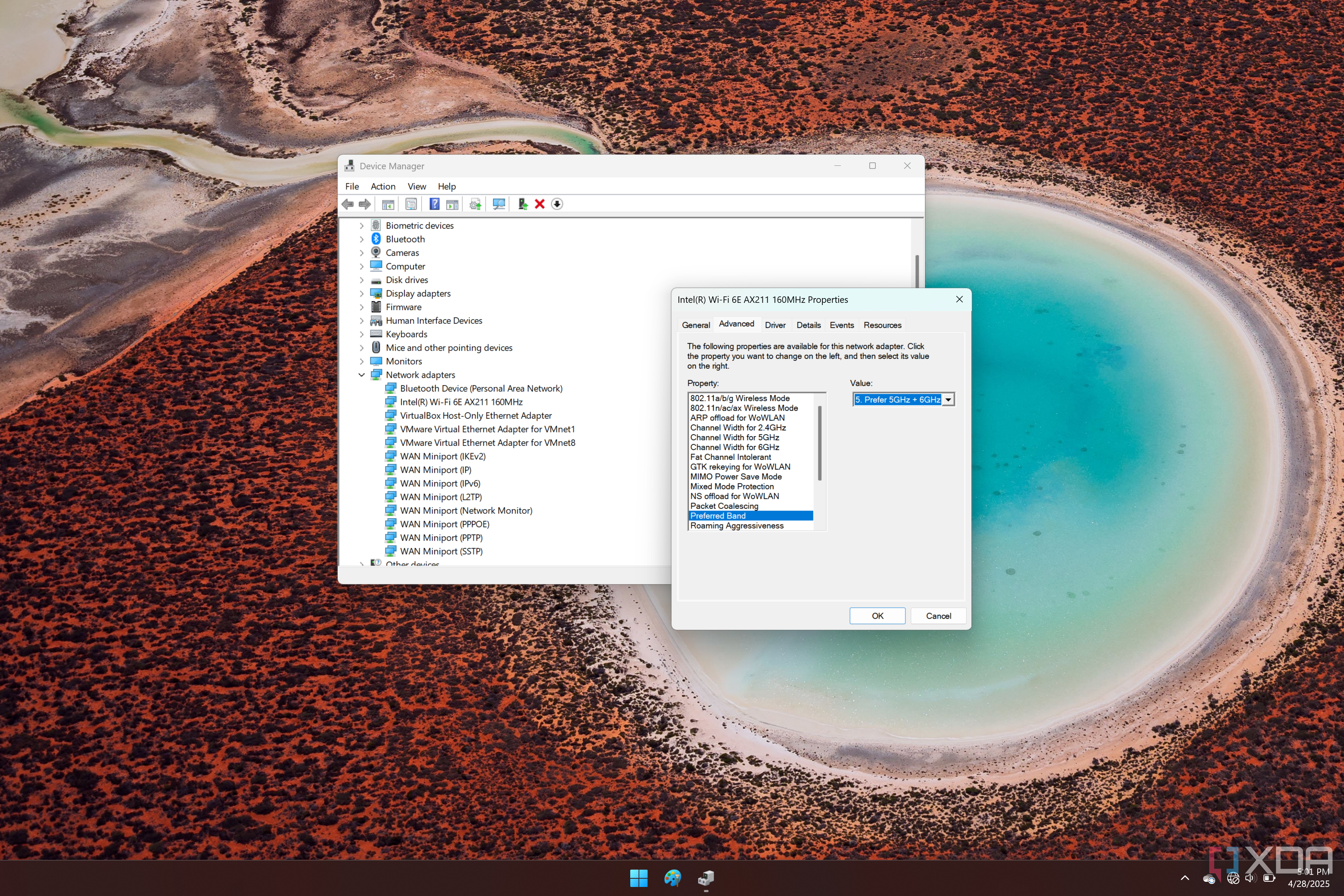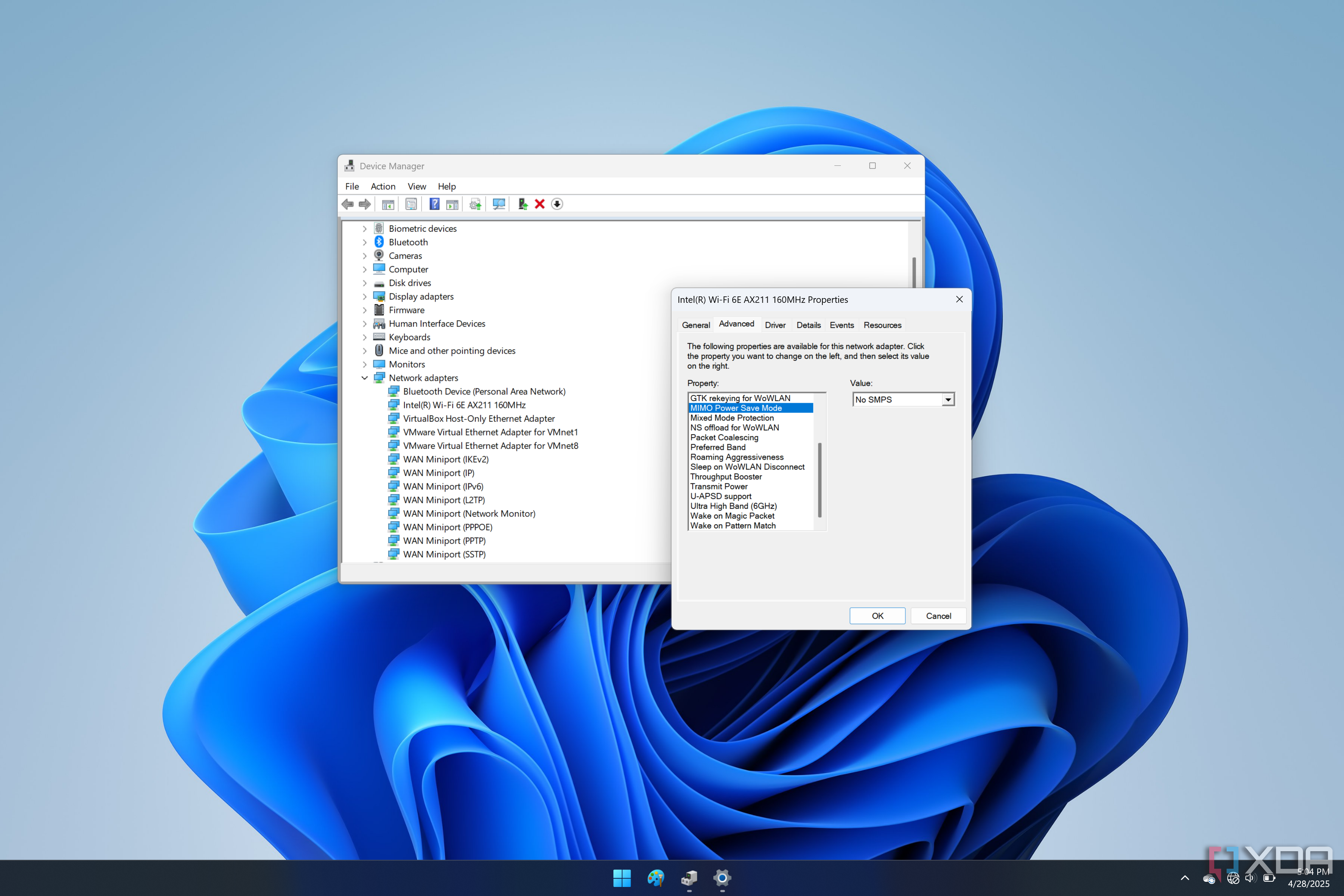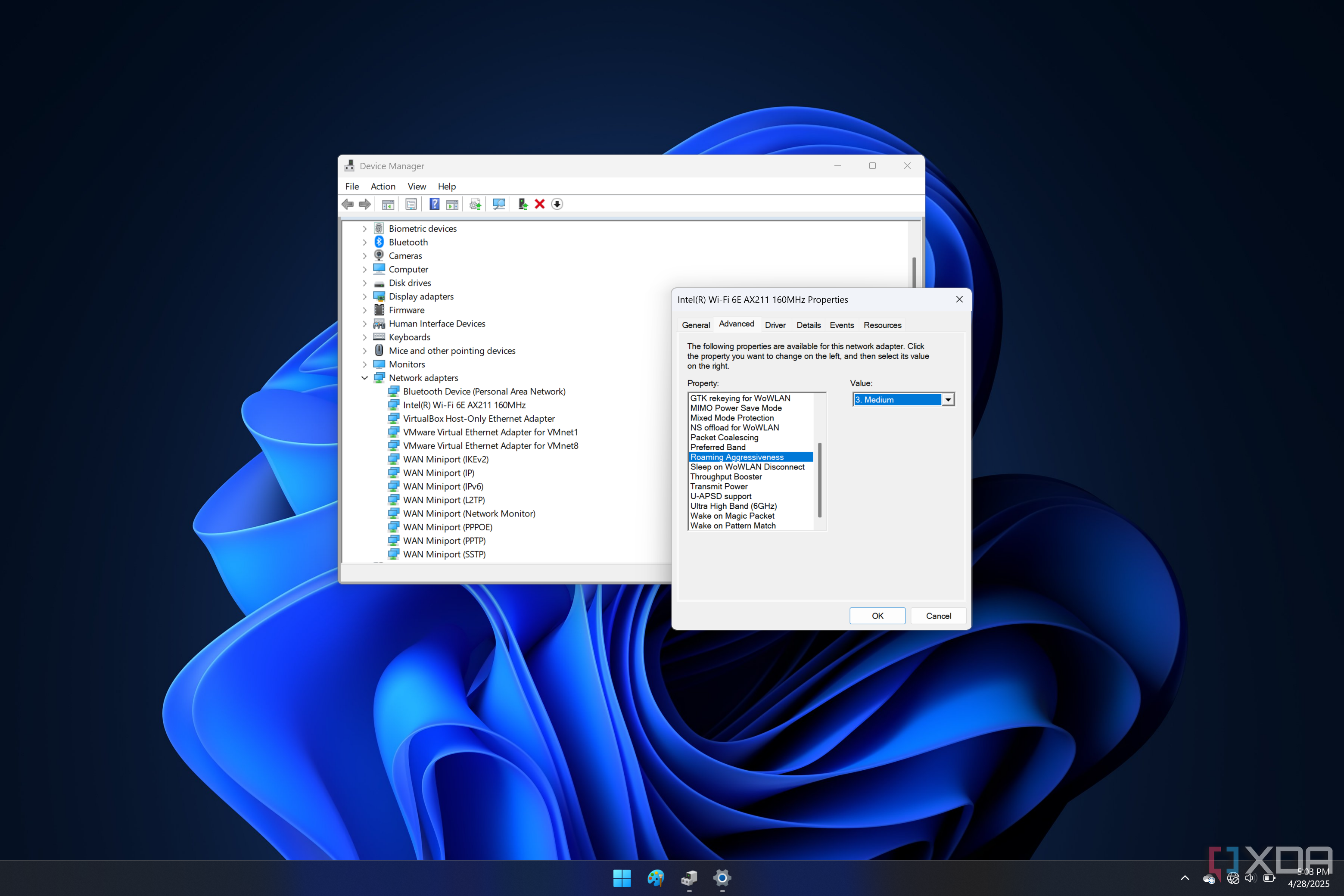In the age of the internet, it’s hard to imagine living without it. I can tell you from experience — someone who has no internet (and no power, for that matter) as I’m writing this article — I’ve seen firsthand how much of a problem it can be to have a slow or non-existent connection.
But while some issues are beyond our control, a slow internet connection isn’t always an unsolvable mystery. There are things you can do to improve your internet speed, and if you’re a Windows 11 user, I have a few tips I have tried myself in the past to help improve my internet connection, particularly over Wi-Fi.
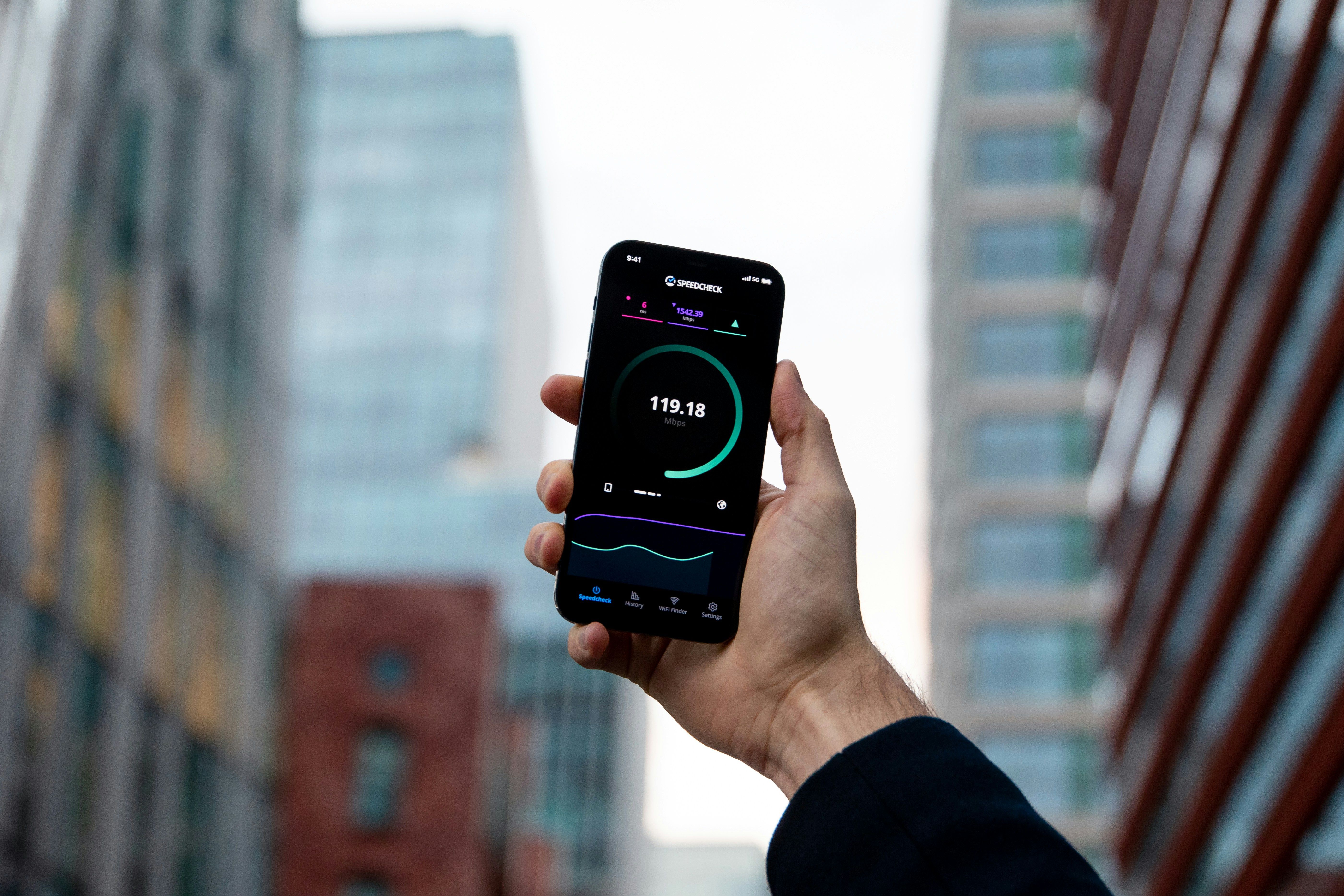
Related
Tired of slow downloads? Here’s how you can upgrade your internet speed.
Slow internet is one of the most common problems with devices. Fortunately, there are plenty of ways to fix this issue.
6
Make sure you’re using the right kind of network
2.4GHz or 5GHz makes a big difference
If you’re connecting via Wi-Fi, there’s a good chance that your device supports at least two Wi-Fi bands: 2.4GHz and 5GHz (and some may even support a 6GHz band, too). In many cases, an access point may have separate 2.4GHz and 5GHz networks, so it’s a good idea to make sure you’re connected to the 5GHz version of the network. The 5GHz band has shorter reach and is more susceptible to interference, but it supports far higher speeds. Inside a house, there’s a very good chance that you’ll get much better speeds using the 5GHz network compared to 2.4GHz.
Windows 11 lets you see the band being used by your Wi-Fi network in the Settings app, under Network & Internet > Wi-Fi > (Network name) properties. You can also check your list of available networks to see if there’s a network with a similar name that may say 5G instead of 2.4G, which is how routers often label each network. It’s possible that your router uses a joint SSID for both bands, in which case you may need to either configure your router, or check step 3 below.
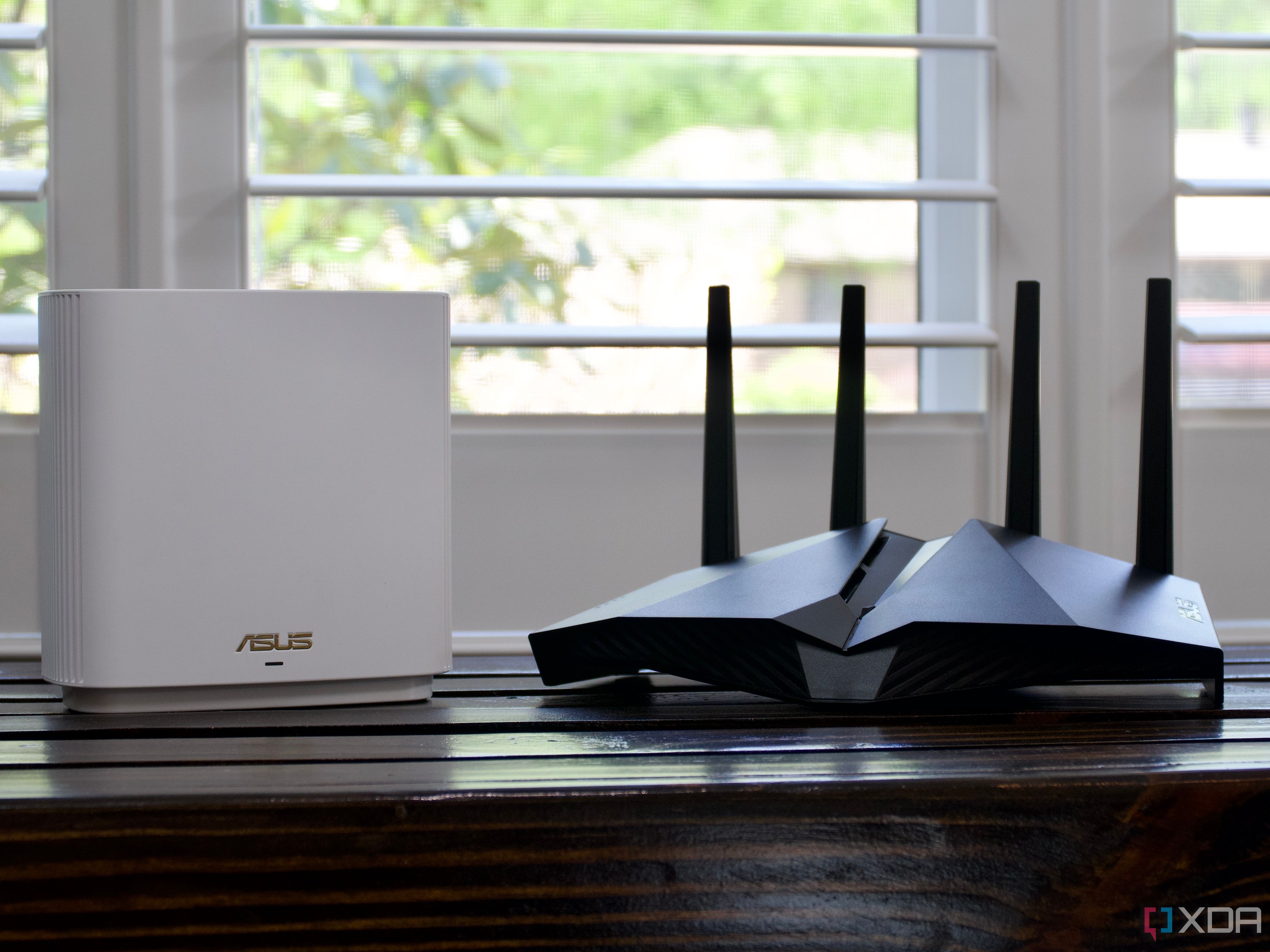
Related
2.4GHz vs 5GHz: Which band should you use for your home WiFi?
Pick the right band on your router depending on your use case.
5
Disable apps that might be using your bandwidth
It’s easy to forget
If you have a slow internet connection in general and you need for something important, it’s a good idea to make sure you’re not running apps that might be eating into whatever bandwidth is available. Start by making sure you haven’t left any streaming services running in the background, or things like games that might be always online. You may also have a video call or something similar running and forgot about it, so make sure those are turned off if you don’t need them.
It’s also a good idea to check for any apps that may sync in the background. It’s unlikely these would use a ton of bandwidth, but things like OneDrive and other cloud storage services may use some bandwidth in the background to make sure your files are all synced up, so if you don’t need those, turn them off.

Related
I don’t use OneDrive on Windows, I use this privacy-focused alternative instead
End-to-end encrypted OneDrive alternative for Windows users
4
Set Windows Update bandwidth limits
Updates can be frustrating
Windows Update is notorious for causing all kinds of headaches with users, and one you might not be thinking of is how it uses up your internet bandwidth. Windows updates download automatically in the background, and depending on your internet connection, that can have a big impact on the speed available for other tasks.
Thankfully, with Windows 10 and 11, it’s easy to set bandwidth limits for Windows Update, which makes it easy to lower the impact of updates on your overall internet speed. By going into the Settings app, you can navigate to Windows Update > Advanced options > Delivery optimization to manage these settings. You may want to turn off the option to Allow downloads from other devices, and also set limits for Download options towards the bottom of the page. You can either as a percentage or an absolute value to make sure your updates don’t get in the way of other needs you may have.
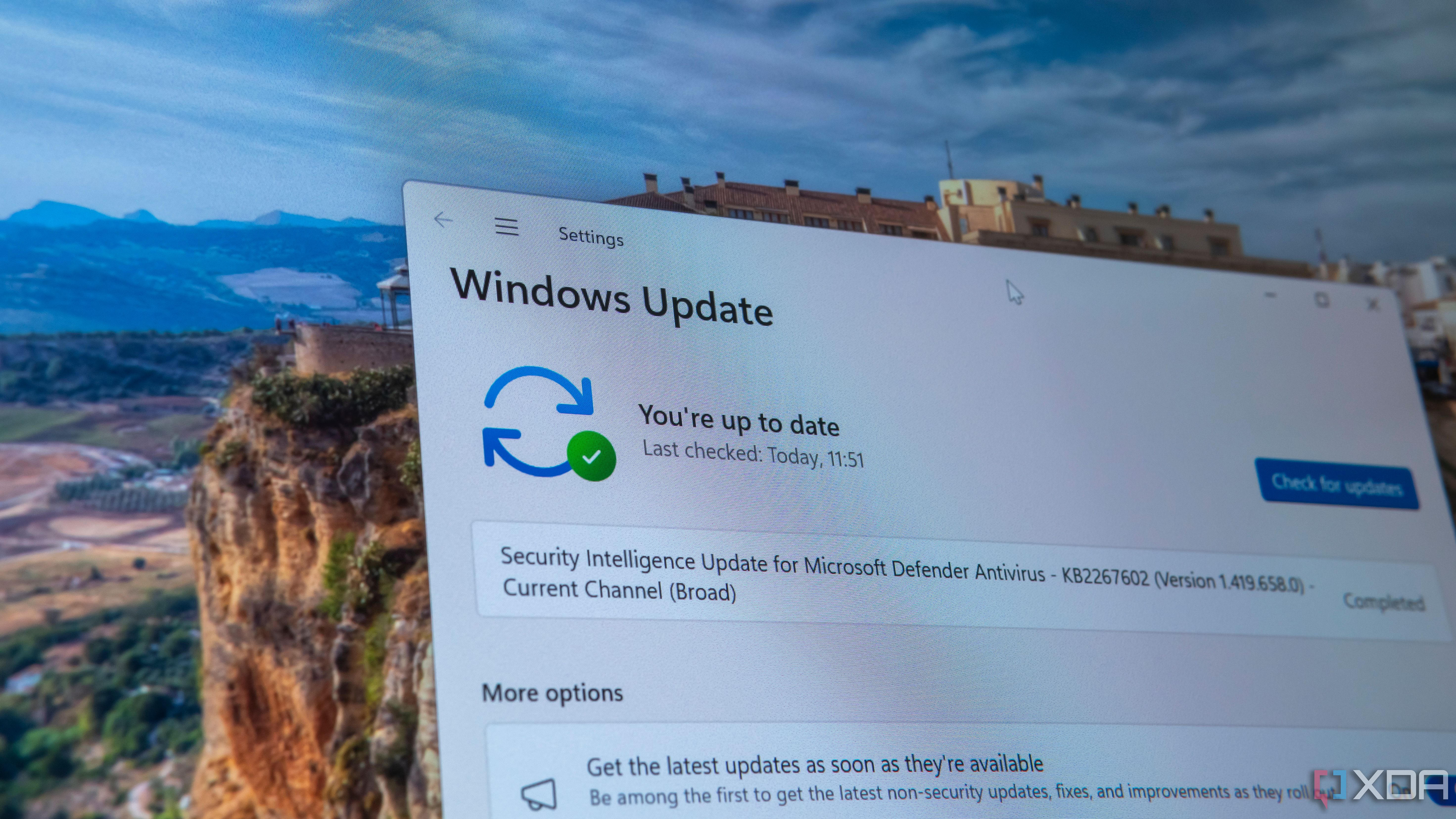
Related
Windows 11 24H2 is a big download — here’s how to stop Windows updates from slowing down your internet
Windows Updates can be a pain, but you can change that
3
Set your network band preferences in your Wi-Fi drivers
For when your PC gets confused
I already talked about network bands above, but that was a more surface-level check just to make sure you’re using the right network in the event that your home has separate 2.4GHz and 5GHz networks. If you don’t however, there’s another possible fix, and one that might actually help in other scenarios, too: configuring your Wi-Fi card to prefer 5GHz networks. These are driver-level settings that will vary depending on your device, but here’s the gist of it. First, right-click the Start menu icon on the taskbar and choose Device Manager. Here, expand the field called Network adapters and look for something that has Wi-Fi in the name. The most common brands are Intel, Realtek, MediaTek, or Qualcomm, so look for these names, too. Double-click the device name to open its properties.
In this window, switch to the Advanced tab and then look for a setting called Preferred Band or something similar. Select it, and then use the dropdown menu to choose 5GHz. More modern adapters may have options such as 5GHz and 6GHz combined, which is even better. Some adapters may also have a setting that outright disables other bands, but this can also cause problems with other Wi-Fi networks, so I wouldn’t use that one unless you really have to.
.jpg)
Related
How to fix the “Windows not could find a driver for your network adapter” error
Having internet issues on your PC? Here’s how you can fix your network adapter drivers to resolve the situation.
2
Maximize transmit power
And disable power savings, too
While we’re in the driver settings, there are a couple more options worth checking out. Following the same steps above, navigate to the advanced settings of your network adapter, and then look for an option called Transmit Power (or similar). Generally, this option will be set to Highest by default, but if it isn’t yet, make sure to set it to that level to improve the Wi-Fi performance of your PC.
Another option you may want to look for is anything that resembles a power saving mode. Disabling power savings may help get you a more reliable and faster connection, though your laptop’s battery may be worse than before.
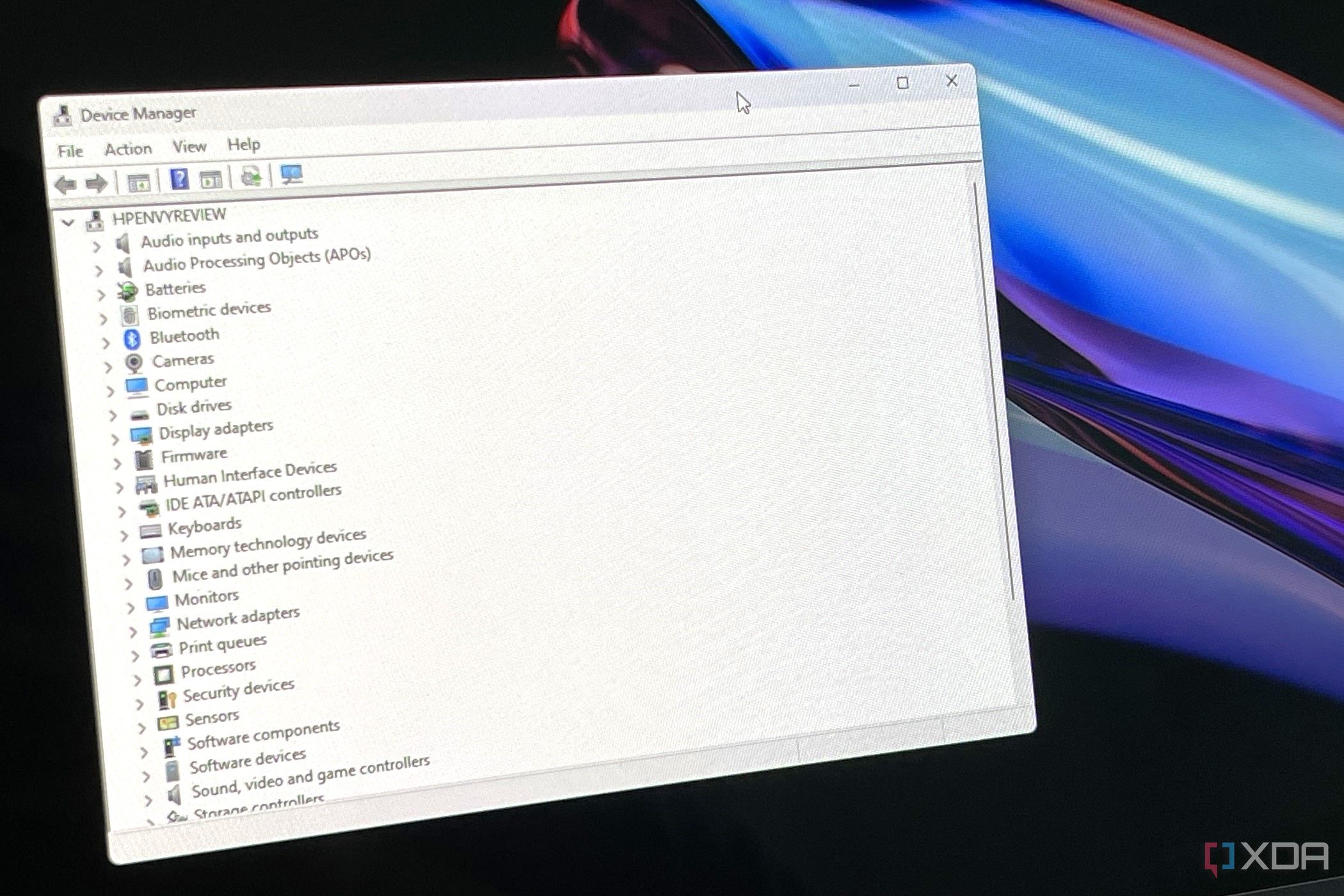
Related
How to update drivers in Windows 11
If you find that a peripheral attached to your PC isn’t working right, or a part of your PC isn’t working, you’ll have to update the drivers.
1
Lower roaming aggressiveness
Make up your mind
Finally, your driver settings may have another feature you’ll want to look into, called Roaming Aggressiveness. This setting determines how aggressive your adapter will be in trying to find the best network signal available, which makes it more likely that you’ll be hopping from one band to another if you’re not directly next to your router.
Generally, roaming aggressiveness should be set to Medium by default, and this will make it so your computer only tries to find a better network if your current connection is degrading significantly. However, if you’re a bit further out from your router, this can cause your computer to change from the 5GHz band to 2.4GHz, even if you get faster speeds with the former.
If you suspect this may be happening, try setting the roaming aggressiveness to the lowest possible value, and then make sure you’re connected to the right band. If so, you should now find that your connection is more stable and you can use it more reliably.
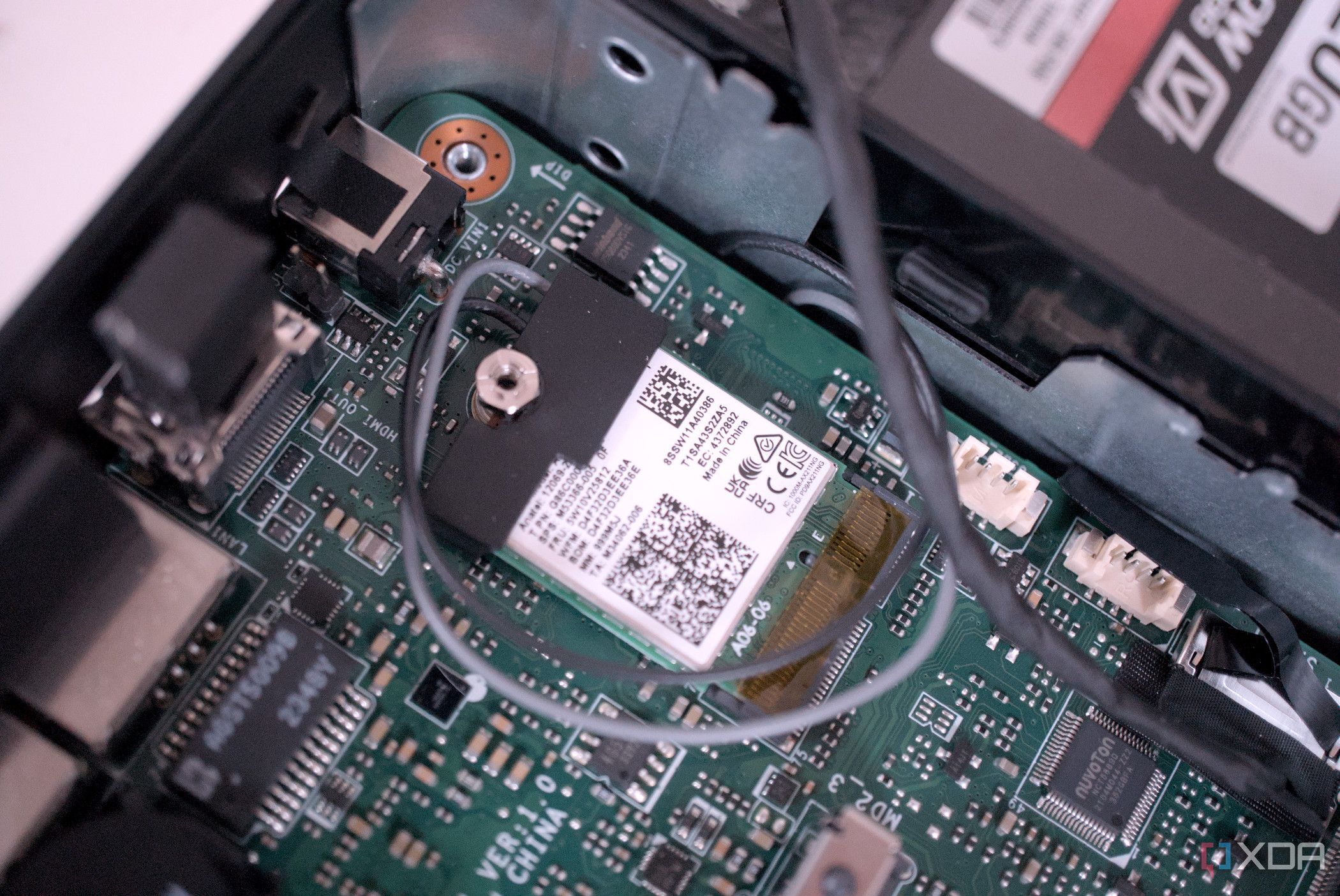
Related
5 things to consider before buying a Wi-Fi adapter for your PC
Okay, you want your computer to have wireless connectivity but which adapter do you need?
Don’t give up on your internet
No one likes a slow internet connection, but if you’re struggling with this problem, the steps above can be very helpful in a pinch. I’ve had many issues with slow internet myself, and these settings often help — though they won’t make any miracles if your internet or your network adapter are just bad. If these steps didn’t do anything for you, you may need to contact your ISP or your computer may need some kind of repair.



